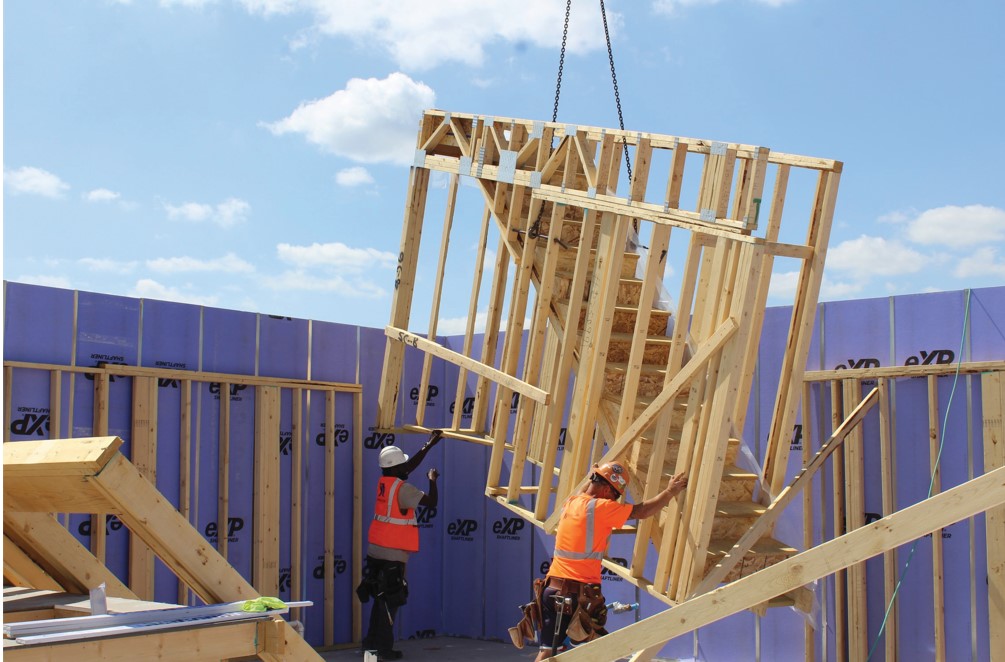Serving the Field Labor
“There’s a reason why we don’t cover walls with lathe and plaster anymore, we found a better way to do it.” say Pat Schwieters, JL Schwieters’ general manager. “We believe wall panels are the better way to frame a wall. Eventually everyone in the field labor business will embrace that.”
BCMC Session: The Value of Framer-Friendly Components
Speakers:
Blake Schwieters, JL Schwieters Building Supply Const. Inc.
Pat Schwieters, JL Schwieters Building Supply Const. Inc.
sbcacomponents.com/bcmc2021-sessions
JL Schwieters started as a framing subcontractor in 1980 framing single-family homes, townhouses and apartments. In 1998, the company shifted stair fabrication offsite to try to better control the most skilled-labor-intensive aspect of a project. Based on the success of that approach, in 2003 they started producing wall panels offsite. In 2017, they began producing floor panels and in 2019 JL Schwieters opened their own truss manufacturing operation.
In their BCMC session, brothers Pat and Blake Schwieters emphasized that every step of their evolution was driven by a desire to make their field framing crew more efficient. As a consequence, the design, manufacture and delivery of each structural component is approached with the end-user, the framer, in mind.

One interesting illustration of JL Schwieters’ framer-first approach to design and manufacturing is their “stair cube” (see photo). During the cold Minnesota winters there occasionally have extra manufacturing capacity so they look for ways to use their shop labor to further help their field labor. “For projects like townhomes, where there is a lot of repeatability, designing a product like this that frames together the stairs with wall panels and floor trusses ahead of time and can be set in place makes a lot of sense,” says Blake. Pat adds, “It’s our version of R&D. We are constantly looking for new ways to frame; these stair cubes are what got us into doing floor panels.”
“I think one of the main messages we wanted to convey during our session was that field labor is, and will continue to be, a big constraint in getting projects completed,” says Blake, the company’s production manager. “We still control our own labor, but a larger and larger portion of our business is going out to other framings crews. We know that the best way to continue that expansion is to understand what those independent framers want and work with them.”
Both Pat and Blake point out that if they don’t collaborate, the framer in the field will figure it out on their own and then dictate what they want, which may not take into account limitations in the manufacturing process. “Collaboration allows for compromise, and that’s the key to a successful project,” says Pat.
